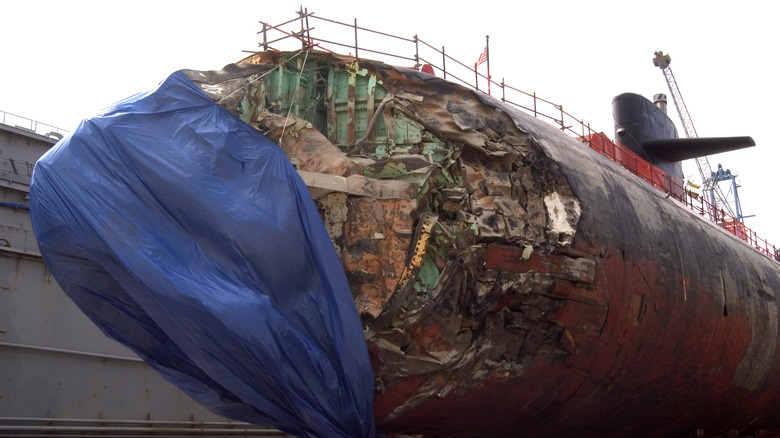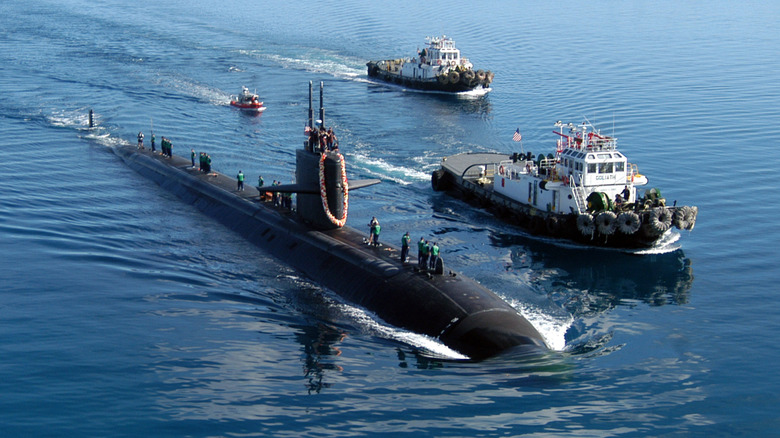How Did The USS San Francisco Hit An Underwater Mountain & Where Is The Submarine Now?
It's safe to assume that any appointment in the United States Navy brings with it a certain degree of danger. The Navy is, after all, a branch of the U.S. Armed Services, meaning that engaging in potential conflicts are a part of the job description. But one could easily make a case that few gigs in the service are quite as hazardous as crewing aboard a vessel in the Navy's vast submarine fleet. The reason for that should be obvious, as submarine duty requires that you live, work, and potentially even battle enemy forces underwater.
However, as the crew of the USS San Francisco learned in 2005, there are perils under the sea beyond just water, sea life, and enemy vessels. It was early January of that year when the crew of the nuclear attack submarine was thrown for a loop — physically and no doubt mentally — after the submerged vessel unexpectedly collided bow-first with a seamount. If you're unfamiliar with that term, a seamount is essentially a mountain protruding from ocean floor, and if you're wondering how, exactly, the USS San Francisco managed to hit one in, it's because this one was apparently not present on any of the crew's navigational charts.
Apart from the outright shock of the moment, some 98 members of the USS San Francisco crew were injured on impact. Tragically, Machinist's Mate Second Class Joseph Allen Ashley was fatally wounded during the collision, succumbing to his injuries a day after the event.
The USS San Francisco eventually found its way back to sea
Given that the collision occurred at a reported depth of 525 feet below water, and that the USS San Francisco made contact with the uncharted seamount at more than 30 knots (around 35 mph), it's almost miraculous that only one crew member was fatally wounded. The loss of life was no doubt stemmed by the fact that the USS San Francisco crashed well above crush depth, and the hull was not breached on impact. Mercifully, the sub also managed to avoid any sort of nuclear reactor failure.
Perhaps even more impressive in regards to the USS San Francisco's case is that, though the submarine was severely damaged during the collision, it was still able to make its way back to port on the Pacific island of Guam entirely on its own. Moreover, the tragic underwater crash was not the last time the USS San Francisco ventured into the deep on a mission. In fact, the sub was in such good shape (apart from the damaged bow) that Naval engineers were able to remove the bow of fellow, and soon-to-be-retired Los Angelas Class sub, the USS Honolulu, and attach it to the front of the USS San Francisco, which returned to service after the procedure.
The nuclear sub would serve for eight more years before being retired to Norfolk, Virginia to operate as a training vessel. The submarine would serve in that capacity until 2022, when it was officially decommissioned by the U.S. Navy to make way for more advanced builds like the Virginia-Class nuclear subs.
[Featured image by SweetCanadianMullet via Wikimedia Commons | Cropped and scaled | Public Domain]

